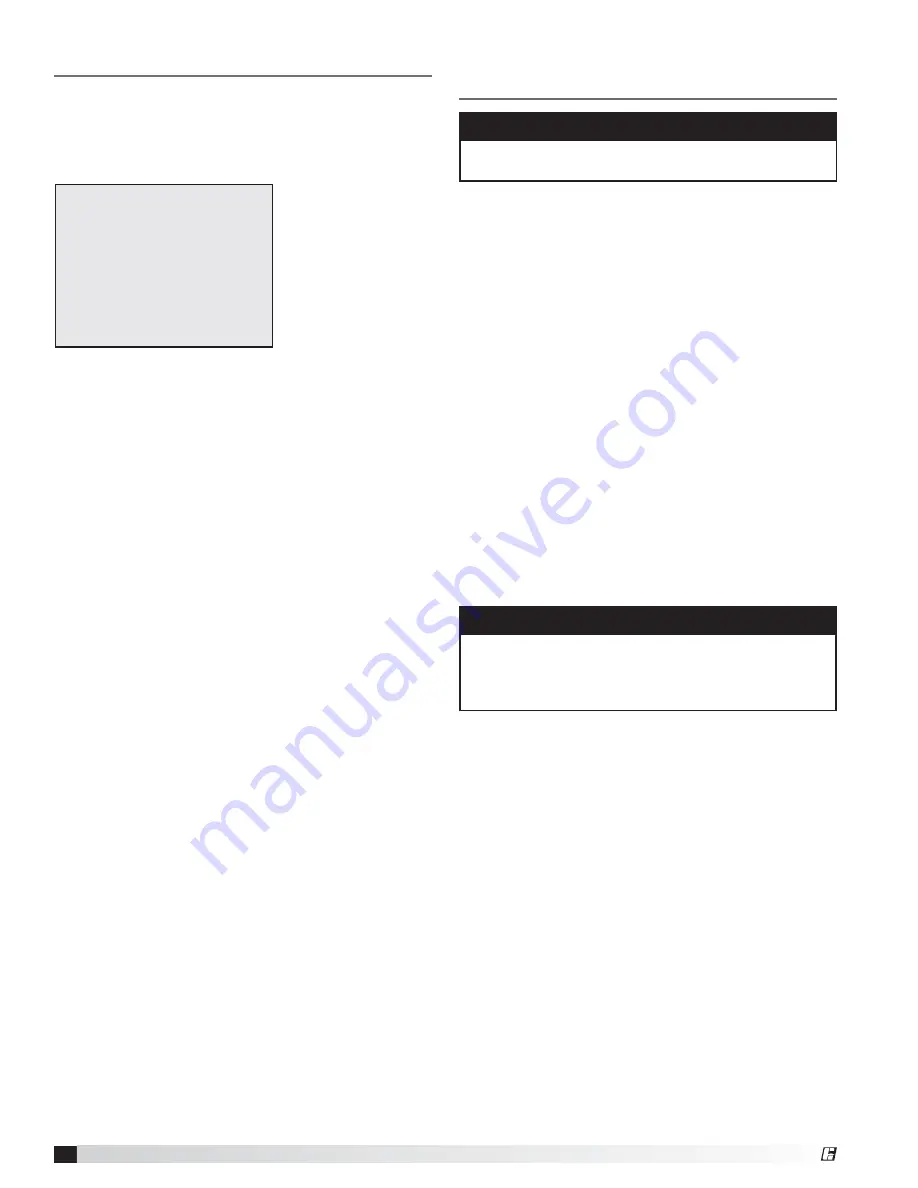
14
Laboratory Exhaust Systems
®
Routine Maintenance and
Operation
Once the unit has been put into operation, a routine
maintenance schedule should be set up to accomplish
the following:
1. Lubrication of bearings and motor.
2. Bypass air dampers should be checked for freedom
of operation and wear.
3. Wheel, housing, bolts and set screws on the entire
fan should be checked for tightness.
4. Any dirt accumulation on the wheel or in the housing
should be removed to prevent unbalance and
possible damage.
5. Inspect fan impeller and housing looking for fatigue,
corrosion, or wear.
6. Examine unit for areas needing paint touch-up.
Fan Operation
Each fan should be run every thirty (30) days as this
causes all electrical and mechanical components to get
up to temperature, displacing any formed condensation,
redistributes load on bearings, and redistributes grease
in the bearings (motor and shaft bearings).
V-Belt Drive
V-belt drives must be checked on a regular basis
for wear, tension, alignment and dirt accumulation.
Premature or frequent belt failures can be caused by
improper belt tension (either too loose or too tight) or
misaligned sheaves.
Abnormally high belt tension or
drive misalignment will cause excessive bearing
loads and may result in failure of the fan and/or
motor bearings.
Conversely, loose belts will cause
squealing on start-up, excessive belt flutter, slippage
and overheated sheaves. Either excessively loose or
tight belts may cause fan vibration.
When replacing V-belts on multiple groove drives all
belts should be changed to provide uniform drive
loading. Use a set of matched belts whenever possible.
Do not pry belts on or off the sheave. Loosen belt
tension until belts can be removed by simply lifting the
belts off the sheaves. After replacing belts, ensure that
slack in each belt is on the same side of the drive. Belt
dressing should never be used.
CAUTION
When operating conditions of the fan are to be
changed (speed, pressure, temperature, etc.), consult
manufacturer or your local representative to determine
if the unit can operate safely at the new condition.
CAUTION
When performing any service to the fan, disconnect
the electrical supply and secure fan impeller.
Vibration
On start-up and during operation, the unit should
operate smoothly with minimal vibration. It is possible
that a higher degree of vibration may be experienced.
Excessive vibration if left unchecked, can cause a
multitude of problems, including structural and/or
component failure.
The most common
sources of vibration
are listed.
Many of these
conditions can be
discovered by careful
observation. Refer to
the troubleshooting
section of this
manual for corrective actions. If observation cannot
locate the source of vibration, a qualified technician
using vibration analysis equipment should be consulted.
If the problem is wheel unbalance, in-place balancing
can be done through the access panel located on
the side of each fan’s tubular housing. Any correction
weights added to the wheel should be welded to either
the wheel back or to the wheel back and wheel cone.
1. Wheel Unbalance
2. Drive Pulley Misalignment
3. Foundation Stiffness
4. Poor Inlet/Outlet Conditions
5. Incorrect Belt Tension
6. Bearing Misalignment
7. Mechanical Looseness
8. Drive Component Unbalance
9. Faulty Belts






































